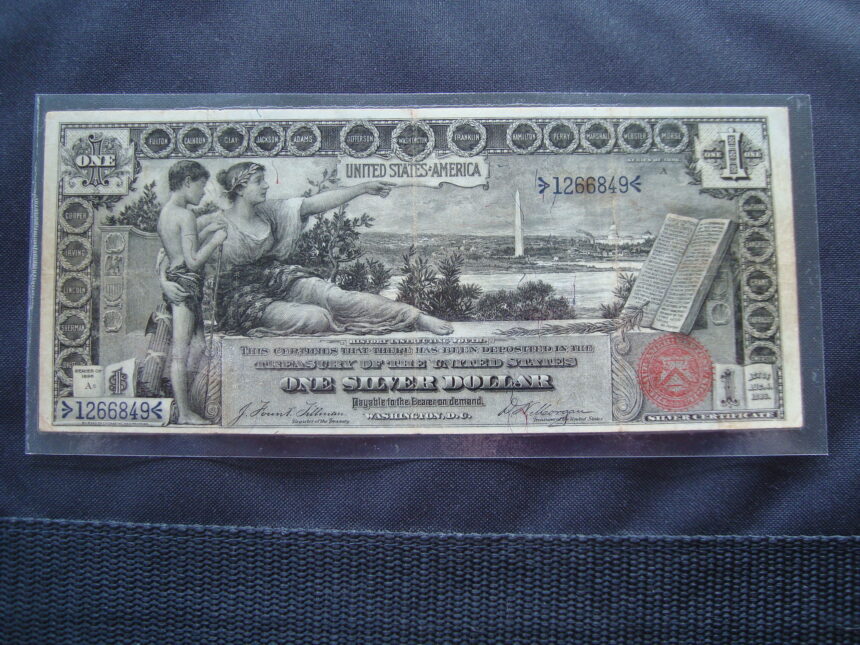When it comes to preserving old banknotes, many people wonder if lamination is a safe way to protect them from further wear and tear. While laminating documents can be effective for certain uses, applying this method to old or collectible money can be quite risky and might actually decrease the value of the notes. Here’s a detailed look at why laminating old money may not be the best choice and alternative preservation methods that are more suitable.
Why Consider Laminating Old Money?
Laminating old money might seem like a simple way to protect it from physical damage, such as moisture, dirt, or frequent handling. The process involves sealing the banknote between two plastic sheets, which are fused together through heat and pressure. This creates a barrier that prevents direct contact with environmental factors, making the notes more durable and resistant to everyday damage.
For modern, everyday use bills, lamination could serve as a way to keep them safe from spills or accidental tears. However, it’s crucial to consider the specific needs of old and rare notes, especially those with historical or collectible significance.
Risks of Laminating Old Money
Laminating old currency can actually cause more harm than good. Here’s why:
- Heat and Adhesive Damage: The lamination process relies on heat and adhesive to bond the plastic sheets. Old paper currency, especially those made from cotton and linen blends, can be sensitive to heat. The heat may cause the paper fibers to become brittle or even slightly shrink. Moreover, the adhesive used in the laminating process can seep into the fibers of the paper, leading to chemical reactions that can alter the texture and appearance of the note.
- Loss of Originality: The value of old or collectible currency often lies in its originality. Laminating fundamentally changes the surface of the bill, which collectors consider an alteration. Collectors and appraisers prefer currency to remain as close to its original state as possible. Any modifications, including lamination, can result in a significant loss of value. A laminated note may be seen as altered or damaged, reducing its appeal to collectors who value authenticity.
- Inability to Reverse the Process: One of the major drawbacks of lamination is that it is a permanent process. Once a note is laminated, it cannot be easily removed from its plastic casing without risking significant damage. Trying to peel back the lamination can tear the paper or leave behind sticky residue that further devalues the currency. For this reason, many preservation experts advise against laminating any valuable paper documents or collectibles, including old money.
- Potential for Mutilation: For fragile or very old currency, lamination can exacerbate existing weaknesses. If a note already has tears or thinning areas, the lamination process could worsen these imperfections. The pressure from the laminating machine can push the paper against the plastic, embedding any flaws deeper into the fibers. This is especially problematic for antique banknotes that might already be deteriorating.
Better Alternatives for Preserving Old Money
Instead of laminating old money, there are safer, more effective methods for preserving these valuable pieces of history. These alternatives help protect the integrity of the banknotes while ensuring that their condition remains as close to the original as possible:
- Use Archival Sleeves: Archival-quality protective sleeves made from materials like polyester (such as Mylar or Melinex) are excellent for storing old currency. These sleeves do not adhere to the paper, allowing the note to be safely viewed without any risk of physical damage. They provide a protective barrier against moisture, dust, and other environmental elements without altering the paper itself. Archival sleeves are commonly used by museums and collectors to store historical documents and currency.
- Encapsulation: Another option is encapsulation, which is often confused with lamination. Unlike lamination, encapsulation involves sealing a document within a rigid plastic case that does not directly touch the paper. The edges of the plastic are sealed, but the document inside remains free-floating. This method is reversible, as the case can be opened without damaging the document. Encapsulation is ideal for protecting fragile currency while maintaining its integrity.
- Proper Storage Conditions: Storing old currency in a controlled environment can prevent many types of damage. It’s important to keep the notes in a cool, dry place away from direct sunlight. Exposure to UV light can cause fading, while high humidity levels can encourage mold growth. Using acid-free paper folders or placing the notes in a dedicated currency album can also help maintain their condition over time.
- Professional Conservation Services: For particularly rare or valuable pieces, seeking the assistance of a professional conservator can be a wise decision. Conservation experts have specialized knowledge and tools to repair and stabilize old paper without the risks associated with DIY methods. While professional services may come at a cost, they are often worth the investment for preserving the value and condition of significant currency.
Final Thoughts: Should You Laminate Old Money?
While lamination can protect certain documents from damage, it is not recommended for old or collectible currency. The risks of heat damage, loss of originality, and irreversibility make it a poor choice for preserving items of historical or monetary value. Instead, consider using archival sleeves, encapsulation, and proper storage techniques to keep your old money safe. These methods allow you to maintain the condition and value of the currency while protecting it from environmental threats.
By choosing the right preservation method, you can ensure that your old banknotes remain in good condition for years to come, preserving their history and potential value. Whether you’re a casual collector or a seasoned numismatist, handling your old currency with care is key to maintaining its legacy. Remember, the value of these notes lies not just in their age but in their story—so treat them with the respect they deserve.





